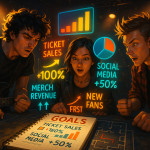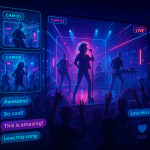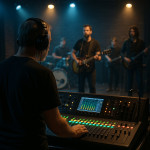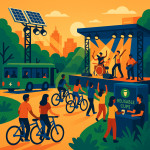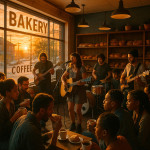How to leverage conference showcases to secure sync deals and brand partnerships
Conference showcases can be career-defining for musicians: they compress months of pitching into a single set that catches music supervisors, advertising buyers and sponsorship managers in one room. This guide walks you through picking the right events, crafting an irresistible performance and converting the applause into signed sync deals and long-term brand partnerships.
Why conference showcases outshine traditional gigs
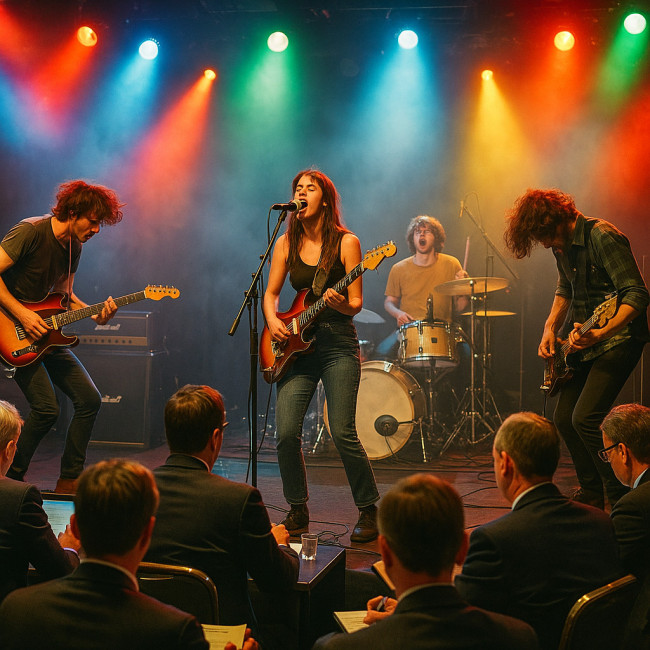
From morning badge pick-up to the last after-hour mixer, a music conference compresses an entire year of “right-place, right-time” serendipity into seventy-two manic hours. Supervisors fly in with open briefs in their laptop bags, brand strategists roam the aisles searching for sonic logos, and catalogue agents binge coffee in the hotel lobby hoping to sign the next ubiquitous jingle. When you step onto the showcase stage you are not just entertaining a crowd—you are running a live A/B test for potential licensors, proving in real time that your hooks can survive outside the club and inside a storyline, a campaign or a trailer.
Unlike club nights, conference showcases gather gatekeepers who actively scout music for films, series, ads and gaming. A single 25-minute slot can place you on the radar of:
- Music supervisors compiling seasonal sync catalogues
- Brand managers looking for sonic signatures for campaigns
- Streaming editors searching for playlist exclusives
- Sponsorship directors evaluating artists for experiential activations
That concentrated attention is why leveraging conference showcases effectively often delivers a faster ROI than DIY tours or endless email blasts.
Choose your showcase with laser precision
Match audience to objective
Before you apply, map your goals. If your priority is film and TV placement, look at music-industry conferences with dedicated sync tracks such as Music Biz or Mondo.NYC. For brand tie-ins, creative-tech events like CES or Web Summit invite agencies hunting for fresh sound identities.
Screen application metrics
| Conference | Avg. Showcase Slots | Sync-focused Delegates | Typical Submission Fee |
|---|---|---|---|
| SXSW | 1 200 | 350+ | $55 |
| Reeperbahn | 400 | 180+ | €35 |
| MIDEM+ | 200 | 220+ | Free (invite) |
Shortlist events where delegate profiles overlap at least 70 % with your target buyer persona.
Prep your act for sync and sponsor appeal
Curate a rights-ready setlist
Music supervisors ditch promising acts if publishing splits are unclear. Ensure every track you plan to play has:
- Clear IP ownership or pre-cleared samples
- Metadata sheets indicating writers, PRO affiliation and master owner
- Instrumental and clean versions accessible in the cloud
Embed brand-friendly storytelling
Weave quick anecdotes that reveal how your music elevates visual narratives. A 20-second intro about licensing a track to a micro-budget indie film demonstrates sync relevance without bragging.
Polish the technical checklist
Nothing kills buyer confidence like a faulty DI box. Run the same sound-check routine you will use on stage at least twice in rehearsal.
Build buzz before the first downbeat
Layered outreach timeline
- Six weeks out : send RSVP-gated teaser videos to targeted delegates
- Three weeks out : post countdown clips on LinkedIn tagging conference hashtags
- One week out : release a sync-friendly single on streaming services with conference artwork
Embedding the event's official hashtag in pre-launch assets often lifts algorithmic reach by 30 %.
Leverage peer stages
Sharing billings? Coordinate cross-posts with other artists to multiply impressions. Our article on planning a showcase tour details practical swipe files for these co-promos.
Networking tactics during the conference
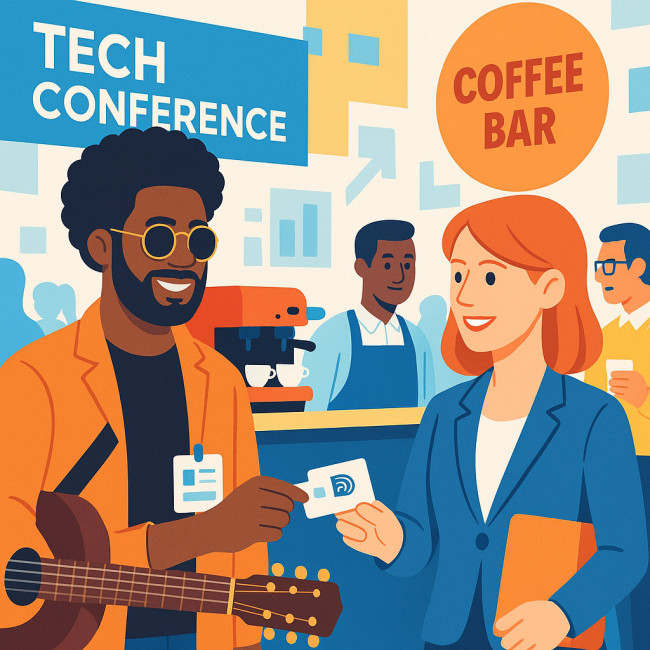
Face-to-face momentum is currency at conferences, yet most delegates stagger from panel to panel drowning in generic small talk. By claiming ten micro-meetings a day you transform the corridor chaos into a conveyor belt of qualified leads. Approach each coffee chat like a pre-scored trailer cut: open with a striking motif—a stat about your audience demographics—build tension by mapping your sound to the brand or show's creative arc, and resolve with a crisp CTA that invites the listener into your drive folder of stems. That dramaturgy keeps conversations memorable long after the lanyards land in the hotel trash.
Stack your schedule with micro-meetings
Use the delegate app to book 10-minute coffees immediately after your set times. Mention the exact moment in your performance you think aligns with the buyer's brief.
Carry fast-action assets
- NFC business cards linking to a private sync playlist
- One-pager PDF with brand case studies
- Pre-filled calendar links for follow-up calls
For more etiquette tips, read this networking guide.
Turn applause into sync deals
Real-time metadata delivery
During Q&As or booth chats, drop a QR code that opens a folder with:
- WAV masters and 24-bit stems
- Cue sheets formatted for major PROs
- Lyrics in .txt and .docx
Pitch visual hooks
Supervisors love seeing how scenes might breathe with your track. Hand them a 15-second mock-sync video combining conference footage and cinematic B-roll.
Secure brand partnerships without sounding salesy
Align sonic DNA to campaign KPIs
Instead of “sponsor my tour,” frame the discussion around the brand's current objectives—whether that is Gen Z reach or sustainability storytelling. Suggest tangible activation ideas like backstage AR experiences or limited-edition merchandise drops.
Bundle exposure metrics
Brands need numbers. Present your monthly reach, playlist adds and fan purchase rates in a simple dashboard. Our article on turning social proof into bookings shows how to build this spreadsheet in under an hour.
Post-event follow-up that locks the deal
48-hour rule
Email every hot lead within two days with:
- A highlight reel time-stamped to their favorite moment
- A recap of discussed deliverables
- A low-friction next step – e.g., “Would you like a 15-minute call to discuss exclusivity options?”
Create FOMO with limited sync windows
Offer first-option rights valid for 14 days. Scarcity nudges decision-makers who juggle dozens of artist pitches.
Common pitfalls (and quick fixes)
- Unverified credits : Add union-linked trust badges like those explained in this verification guide.
- Over-crowded setlists : Three sync-ready tracks outperform eight random songs.
- Missing instrumental versions : Keep a Dropbox link on your phone.
- No clear rate card : Share starting figures or supervisors may assume you are out of budget.
Ready to test your knowledge?
FAQ
- Do I need a publisher to close a sync deal after a showcase?
- No. Many independent artists license directly. Ensure you can deliver master and publishing rights without dispute.
- How early should I apply for conference showcases?
- Most submission portals open six to nine months before the event. Applying in the first month often improves selection odds.
- What split should I expect on brand partnerships?
- Fee structures vary, but a flat sponsorship fee plus a 10–15 % product-sales royalty is common for mid-tier acts.
- Can one showcase really lead to multiple deals?
- Absolutely. A tight performance with follow-up has landed artists both a Netflix trailer placement and a beverage sponsorship within weeks.
- Is it worth attending if I don't get an official slot?
- Yes. Many artists secure hallway meetings and off-site sessions that later convert, especially when they follow tips from this seasonal showcase calendar.
